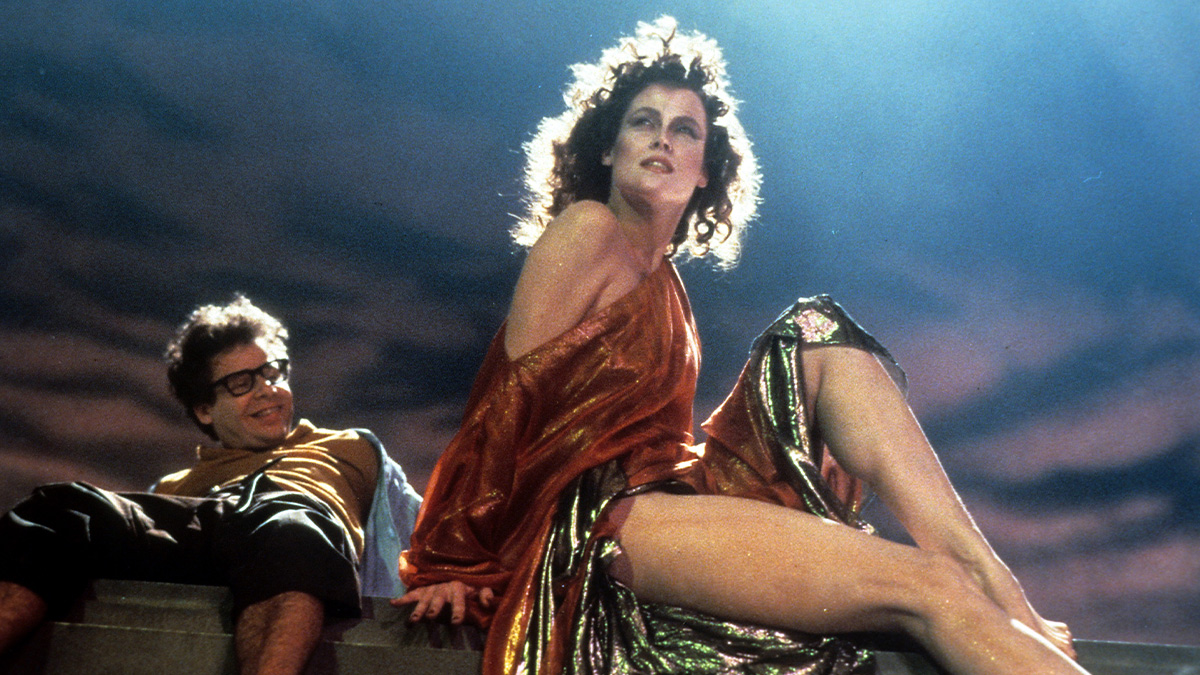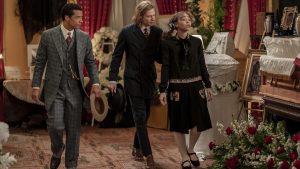
The darkness enveloped me, and despite the summer heat outside, the air in the building was cool. I sat in silence, intently focused, anticipating what happened next, but not quite prepared. I tensed up upon seeing the spectral woman directly ahead of me. She silently floated, translucent and seemingly unaware — until at last facing me and lunging with a guttural growl as her face distorted into some horrific entity.
This memory is entirely true; it is a ghost story, but not one that took place in a haunted house. Rather, the setting was a haunted library, projected on screen in a movie theater during one of my many viewings of Ghostbusters.
Released 40 years ago on June 8, 1984 — the same day as Gremlins and three weeks after Indiana Jones and the Temple of Doom — Ghostbusters became a pop-culture phenomenon and box office juggernaut. Written by Dan Aykroyd and Harold Ramis — inspired by Aykroyd’s own paranormal leanings and upbringing in a family with Spiritualist roots — the film gave the world Slimer, the iconic “no ghosts” logo recognized across the globe, and a theme song that remains one of the most famous in movie history (and launched a franchise that made bustin’ feel good for two generations, and isn’t giving up the ghost, based on the performance of this year’s Ghostbusters: Frozen Empire). And whether it was conscious or not, unscripted paranormal TV of the early 2000s was even influenced by Ghostbusters with the “we’re ready to believe you” mission statement and ghost-detecting gadgets, trading in Egon’s PKE meter for a K-II EMF meter.
Along with its lasting cultural impact, the June release of Ghostbusters highlighted how the audience’s appetite for ghosts is not relegated to Halloween. Rather, summer is a great season for a ghost movie.
Movie theaters allow audiences to escape the hot sun for a few hours but can also serve up a concentrated dose of autumn. A trip to the cinema interestingly even mimics an excursion to a haunted house where we likewise might sit in silence in chilled darkness, absorbing the sights and sounds around us, embracing the build-up of tension, and gorging on trick-or-treat/movie concession candy all the while. And what is the moviegoing experience except a larger scale community version of friends gathering together to share spooky tales whilst the storyteller’s face is illuminated by only a flashlight?
Yet Ghostbusters wasn’t alone in successfully serving up spectral scares during summer (and although it is a comedy, there’s most certainly freaky stuff in the movie, such as Dana’s armchair possession in her apartment and that taxi cab ghoul that freaked me out as a kid). Nor was it the first.
Just two years before Ghostbusters’ release, Tobe Hooper and Steven Spielberg’s suburban ghost flick Poltergeist became a hit when it premiered in June 1982. And though it’s associated with the winter, Stanley Kubrick’s ghost film The Shining — widely considered one of the greatest horror movies of all time — opened Memorial Day Weekend 1980, kicking off the sunny season.
In fact, in the last 50 years, many of the biggest films featuring phantoms debuted during the Northern Hemisphere’s hottest months, from late May through August. What’s more, the trend is not limited to big-budget tentpole releases, and it extends across genres.
Along with Ghostbusters in the comedy category, the specters of summer have crossover appeal in romance (Ghost, July 1990); family fare (Casper, May 1995); animated films (Monster House, July 2006; ParaNorman, August 2012); adventure (Pirates of the Caribbean: The Curse of the Black Pearl, July 2003). Plus, there are too many horror examples to count: The Amityville Horror, July 1979; The Blair Witch Project, July 1999; The Haunting, July 1999; The Sixth Sense, August 1999; What Lies Beneath, July 2000; The Others, August 2001; 1408, June 2007; The Conjuring, July 2013, and four of its seven subsequent sequels and spinoffs.
And these don’t even include summer blockbusters featuring notable ghost appearances, like Raiders of the Lost Ark, The Empire Strikes Back, The Lion King, and a few Harry Potter films. If one were to expand the definition to include other ghost-adjacent or supernatural-themed (The Omen, June 1976) late spring releases (Pet Sematary, April 21, 1989) or some of the more profitable franchise entries of A Nightmare on Elm Street or Friday the 13th — including Freddy vs. Jason (August 2003) — the list increases of warm-weather blockbuster boos.
Of course, great ghost stories simply resonate with audiences no matter what time of year they are released. But this paranormal pop culture pattern is too coincidental to deny. Regardless of whether people seek to escape the heat by experiencing a chill down their spine or perhaps they want to replicate a haunted house within the movie theater several months before Halloween’s spooky season, one thing seems about as clear as the apparitional librarian from Ghostbusters: Spirits are likely to continue haunting the summer cinema for years to come.
For more of the paranormal, the unexplained, and high strangeness, subscribe to our paranormal pop culture podcast Talking Strange on Spotify, Apple Podcasts, and YouTube, hosted by Aaron Sagers of Netflix’s 28 Days Haunted and discovery+/Travel Channel’s Paranormal Caught on Camera.
The post Why the Summer Is a Great Time for Horror Movies appeared first on Den of Geek.






